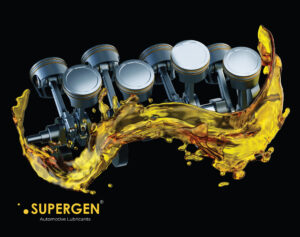The role of engine oil
Engine oil is an important component of the engine and is hugely responsible for keeping everything working smoothly. The engine oil is essentially a fluid that is circulated in the engine. Since the engine parts keep moving against each other, they create friction that may cause wear and tear. Engine oil is what keeps these internal parts of an engine lubricated well enough to prevent such wear and protect all sensitive parts. Furthermore, engine oil also works to prevent contamination of the engine. It carries away all the dirt, grime and other particles that may have settled on the engine and also prevents rust and corrosion. Thus, driving a vehicle without engine oil or with bad quality of engine oil is an absolute no-no and will lead to severe damage to the engine.
Understanding engine oil viscosity
All vehicles have varying engine designs, based on the utility, type and model of the vehicle. Thus, different engines have differing requirements from engine oils and that is why engine oils come in various types and grades.
The three main types of engine oil are conventional oil or mineral oil, semi-synthetic oil and synthetic oil.
Mineral oil is largely unrefined and the crudest and oldest type of engine oil. Synthetic oil, on the other hand, is the most advanced type of oil and is made fully in the laboratory for maximum efficiency. Semi-synthetic is a mix of crude and synthetic oils.
Apart from these types, engine oils also have different grades. These grades are dependent on the thickness or viscosity of a certain oil. However, oil viscosity is not static, as it is dependent upon temperature. In high temperature climates or very hot engines, engine oil tends to become thinner. On the other hand, in extremely low temperatures, engine oil is thicker. Since engine oil viscosity varies according to temperature, oil grades are usually expressed as a range of two numbers i.e. the thickness level at cold temperatures as well as the thickness level in hot climates.
For instance, 10W-20 is a popular engine oil grade. In this grade, the first number 10, represents the thickness levels in W(Winter) conditions or cold temperatures. On the other hand, 20 represents the thickness level at hot temperatures. Engine oil grades can range from 0W right up to 60W or even higher.
and that is why engine oils come in various types and grades.
Ideal thickness for engine oils
It is important to understand that different engines have different requirements from engine oils. This is why each vehicle comes with its own recommended engine oil grade and type that is mentioned in the owner’s manual. Vehicle owners are advised to refer to their manual and only use the engine oil grade that is recommended for their specific model and engine design, since using the wrong engine oil can also lead to damage.
There is no way to determine whether thinner engine oil is better than thicker oil, since that would depend on the vehicle, its engine, its use and the temperature and climate in which it is being used.
Thin oils are preferred when:
- You live in a cold climate location, where temperatures regularly reach zero or sub-zero temperatures
- You wish to increase mileage of your vehicle
- Your vehicle is relatively modern, is high powered and can reach high speeds
Thick oils are preferred when:
- You live in hot climates which rarely reach low temperatures
- Your car is old or has an old engine, which can be prone to leaks
- You wish to prioritise high level of protection from wear and tear and want superior lubrication
Conclusion
Engine oil is vital for the well being of an engine. There are different grades of engine oil available on the basis of their viscosity. Thin oils can be used in low temperature areas whereas thicker oils are preferred in very hot climates. Similarly, older engines that are prone to leaks and excess wear and tear might need thick engine oil, while more modern engines with higher mileage use thinner oils. Different engines require different levels of thickness in their engine oil and owners should refer to the owner’s manual to determine which grade of engine oil is best for them.








